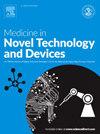角膜材料非线性及其对角膜生物力学比较研究的影响
Q3 Medicine
引用次数: 0
摘要
角膜生物力学评价已成为圆锥角膜、角膜交联、屈光手术、青光眼等领域具有广泛临床意义的研究热点。尽管活体角膜生物力学成像技术取得了进展,但离体实验对于比较疾病和治疗方案的生物力学效应仍然至关重要。然而,由于角膜材料的非线性行为,在不同载荷条件下获得的生物力学指标的比较可能是困难的和误导性的。此外,在超出正常生活条件的不现实负荷下进行的生物力学估计可能具有有限的临床相关性。本研究旨在通过评估角膜在生理和极端条件下的生物力学特性来评估这一问题。在不同应变率(0.8%、25%、83%和420% /min)下,获得了猪角膜样品的应力应变数据。在所有情况下,行为都与两阶段模式密切匹配,包括初始的非线性低应力区域,随后是高应力下的线性区域。在生理应激水平(0.01、0.015和0.02 MPa)和极端应激水平(0.15、1.0和2.0 MPa)下计算切模量(Et)。在生理应激水平下的比较显示,随着应变速率的加快,Et的增加趋势相似,而在高/非生理应激水平下,Et值在应变速率从25%到420% /min之间保持相对不变。这些发现强调了在生理负荷水平下测试角膜行为的重要性,并在解释不代表正常组织状态的高负荷结果时发出警告。本文章由计算机程序翻译,如有差异,请以英文原文为准。
Corneal material nonlinearity and its effects on the comparative study of corneal biomechanics
Corneal biomechanical evaluation has become a research hotspot with wide clinical relevance in fields such as keratoconus, corneal cross-linking, refractive surgery, and glaucoma. Despite advances in in-vivo corneal biomechanical imaging, ex-vivo experiments remain essential for comparing biomechanical effects of diseases and treatment protocols. However, due to the nonlinear behaviour of corneal material, comparisons of biomechanical metrics obtained under different loading conditions can be difficult and misleading. Furthermore, biomechanical estimations conducted under unrealistic loads that exceed normal living conditions may have limited clinical relevance. The current study aims to evaluate this issue by assessing the biomechanical properties of the cornea under physiologic and extreme conditions. Stress-strain data were obtained for porcine corneal specimens subjected to widely different strain rates (0.8 %, 25 %, 83 % and 420 %/min). In all cases, the behaviour closely matched a two-stage pattern consisting of an initial nonlinear low-stress region followed by a linear region under higher stresses. Tangent moduli (Et) were calculated at physiologic stress levels (0.01, 0.015, and 0.02 MPa) and extreme ones (0.15, 1.0, and 2.0 MPa). While comparisons at physiologic stress levels showed similar increasing trends in Et with faster strain rates, at high/non-physiologic stress levels, Et values remained relatively unchanged across strain rates from 25 % to 420 %/min. These findings underscore the importance of testing corneal behaviour under physiologic loading levels and signal cautions when interpreting results under high loads that do not represent normal tissue conditions.
求助全文
通过发布文献求助,成功后即可免费获取论文全文。
去求助
来源期刊

Medicine in Novel Technology and Devices
Medicine-Medicine (miscellaneous)
CiteScore
3.00
自引率
0.00%
发文量
74
审稿时长
64 days
 求助内容:
求助内容: 应助结果提醒方式:
应助结果提醒方式:


